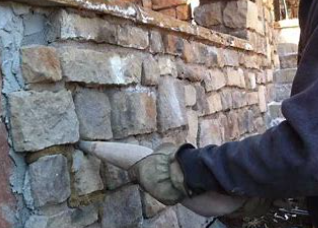An Irishman on DC’s “Rum Row”
SOURCE: By Jack Sullivan, The Potomac Pontil
When the inaugural parade for Theodore Roosevelt stepped off on Pennsylvania Avenue in Washington DC in 1905, many of the spectators held in their hands a souvenir program. Edward J. Quinn, a saloonkeeper on the avenue, likely watched the marchers from his business address, knowing that the program held a prominent ad for his flagship brand, Oronoco Rye. The Irishman Quinn had truly “arrived” in the Nation’s Capital.
Quinn’s story began in Galway, Ireland, from whence his father, also named Edward, emigrated to the United States in 1859. Three years later, during the midst of the Civil War, he settled in Alexandria, Virginia, a town then occupied by Federal military authorities. Shortly after the end of the war the Senior Quinn established a grocery business on a tract of land he had purchased lying north of Oronoco Street and west of St. Asaph Street. He married and had a family of seven children, including a son, Edward, whom he brought into the business with him as the boy matured. The father featured a flagship brand of whiskey which, appropriately enough, he named “Oronoco.”
Fast forward a few years. In the late 1800s, Edward J., with his father’s blessing and likely financial support, established a saloon and a retail liquor store at 604 Pennsylvania Avenue, strategically placed in DC opposite the Pennsylvania Railroad Station and adjacent to the National Hotel. The avenue held a plethora of drinking establishments and had earned the nickname “Rum Row.” The 1900 Census found Quinn, age 33, living above the saloon with his wife Ellen. With them was his widowed mother, Brigid, and two children, Mary, three years old, and a baby, Helen, who later died in infancy. Two servants were also recorded in the household.
Edward Quinn also had the rights to market the whiskey his father had created. He advertised Oronoco Rye vigorously in Washingtonnewspapers and other media outlets. He boasted that his whiskey was “a time-honored stimulant of absolute purity.” He suggested that when the doctor prescribed “a little whiskey,” he meant Oronoco Rye. “Therefore, it is essential that you always have a supply of Oronoco Rye on hand.” Almost as an afterthought Quinn also suggested it was preferred for mixed drinks — something the doctor may not have ordered. Quinn also offered a second brand, “Bluemont Whiskey.” He trademarked Bluemont in 1904 and Oronoco in 1905.
In addition to selling Oronoco behind his bar, Quinn retailed it in glass bottles. Some like the one shown here had a fancy label that described the Irishman as the “sole distributor. He also featured fancy embossing of many of his quarts and flasks, again bringing his Oronoco brand to the fore. Like many other Washington whiskey men, Quinn found it expedient to provide giveaway items to favored customers for his whiskey. Such gifts principally found expression in fancy etched shot glasses for bartender use. Those also prominently advertised the Oronoco brand.
A Republican like his father, Edward must have been proud to have his ad in the program for Roosevelt’s inaugural. We can imagine him standing in the doorway of his drinking establishment waving as the President-elect rode by in the parade. His whiskey sales were making Quinn increasingly prosperous. As a result he found it possible to move his family away from his saloon to a real home. By the time of the 1910 census the Quinns had moved to a house on fashionable Massachusetts Avenue, number 1234. In addition to wife Ellen and daughter, May, he now also had a son, Edward, age 4. His mother, now 73, was still living with them as were two boys named Cox, possibly relatives of his wife.
Quinn, however, was not long to enjoy his riches. About 1911, he died and his widow, with young children to raise and clearly needing money, almost immediately sold the Pennsylvania property and business, including the rights to Oronoco Rye. The buyer was another DC Irishman named D. J. O’Connell. The latter lost no time in making the switch of identification. Shown here is a bottle or Oronoco Whiskey in which the regular label has been pasted over with a second label identifying it as D.J. O’Connell’s.
Whatever prosperity O’Connell gleaned from his saloon and package sales would be short-lived. Temperance advocates had targeted Washington for prohibition, knowing that a simple vote of Congress, which governed the District, could do the job. Accordingly on March 3, 1917, by vote of Congress, DC officially went “dry.” At the time there were 267 barrooms in the city. All of them, including those on “Rum Row,” were forced to close. The Washington Times estimated that the District thereby lost 2,500 jobs and $500,000 (in 1917 dollars) in revenue.
That was the end of the booze business built by Edward Quinn on Pennsylvania Avenue. For the next 17 years no parade down that storied street would pass by a saloon, “sample room,” beer joint or any semblance of a watering hole. The memory of that pre-Prohibition time and one enterprising Irishman, however, is kept alive by the artifacts in bottles and glass still to be seen in local collections.
Latest News

4 Ways To Reinforce Concrete
Concrete is one of the most fundamental materials used in construction. If you’re working on a domestic project or a […]

The Environmental Benefits Of Using Ready-Mix Concrete
The construction industry is changing quickly to meet the growing demand for sustainability and eco-friendly practices. One of the most […]

6 Essential Tips For Grouting Stone Veneer
Grouting stone veneer is an important step in the installation process that can significantly impact the overall look and durability […]

Should You Fill Hollow Concrete Blocks?
Hollow concrete blocks are widely used in construction due to their strength, versatility, and lighter weight compared to solid blocks. […]
